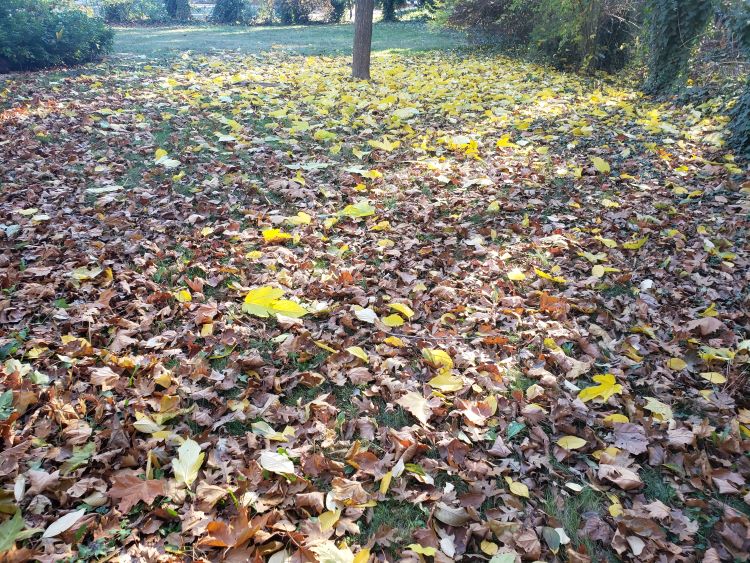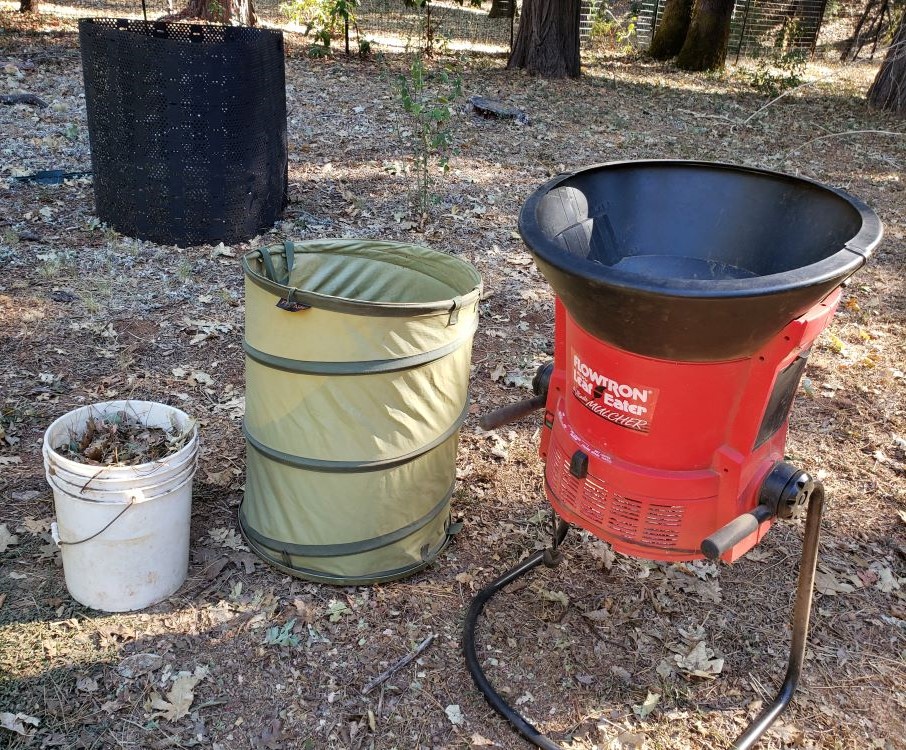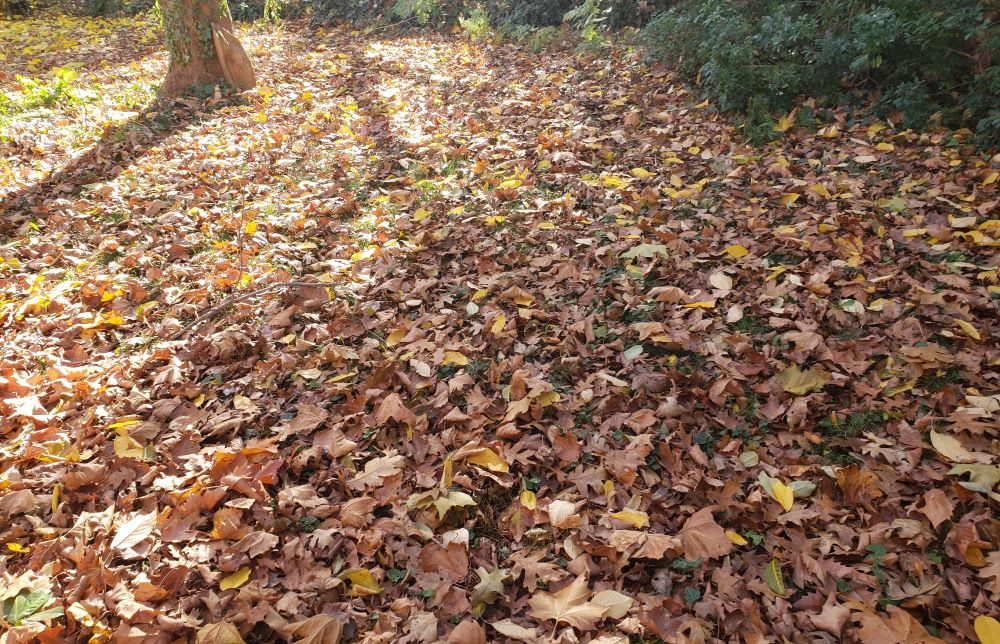All during the growing season, trees and shrubs rely on their leaves to feed them from the sunlight. During this time all kinds of activity occurs on those leaves. Insects and caterpillars munch on them, which in turn are munched on by birds. Even fungi and bacteria take up residence on leaves, many of which help keep the bad fungi in check.
Many species of butterflies and moths lay their eggs on the leaves of plants they eat so when their little baby caterpillars hatch in spring they’re right at their food source. Even when the leaves fall, the baby caterpillars have just a short distance to go to get to their food.
Unless we take them all away. Which is what we do when we rake and bag up or burn or even shred the leaves.
Leave the leaves
Many people are advocating leaving the leaves where they fall in order to support butterfly and other vital insect species. Also to allow the organic matter to slowly enrich the soil around the tree to complete nature’s recycling system.
The Xerces Society is one such advocate. They claim it’s one of the most valuable things you can do to support pollinators. You can read what they suggest on their website here.
But if your trees are on a lawn you may question how this is going to work. Surely the leaves will harm the lawn? And yes, that can happen. If the leaves are small, like from a Japanese maple, there will probably be little to no harm to the lawn.

But bigger or thicker leaves can take a longer time to break down so that your lawn will suffer.
Ideally your trees are separate from the lawn because grass and woody perennials need different types of sol nutrients (see my article Trees and Shrubs Roots Do Vital Work In Fall & Winter). So that means they need different treatment to the surface.
If they are separated you can leave the leaves as a mulch. This is ideal.
In my new backyard are two large sycamore trees (not the native ones, sadly). Their thick large leaves are dropping onto the lawn below along with a fruitless mulberry with large leaves. I don’t care too much for the lawn, but at least this year I will keep it. But there are a lot of leaves.
Lawn or no lawn, sometimes the leaves are too big, too thick, or too many to leave where they fall. So here are some things we can all do to keep the leaves on our sites, not in the green waste.
Place them around other perennial beds as a mulch
If they’re not too large, you can use them as a mulch. The winter rains will soften them up and flatten them down to make good contact with the soil. This will shelter soil organisms and bring them up to the leaves to start the decomposition process. It will also conserve moisture in the soil that will help your plants weather heat, drought, or simply last longer into the dry season next summer.
Pile them up to break down in a cold compost
Make piles of leaves where they can sit for a year or two, or more, and let the rain moisten them so the worms and other soil organisms can start working on them. When they’re softened up you can use them at any time to place around your perennial plants and trees and shrubs.
Just keep them a few inches away from the trunks, but pile them to three to four inches deep on the soil, where feasible.
But not on your annual beds, those that you plant each year, like vegetables and annual flowers. They need a different soil treatment, one that’s higher in nitrogen.
Use the leaves as a carbon source for compost piles
Whether you’re hot or cold composting you need a carbon source. Kitchen scraps, grass clippings, and animal manures are nitrogen-rich sources. Straw and leaves are good carbon sources.
But still, they may be too big, like my sycamore leaves. So here’s what I like to do…
Shred the leaves

To use larger leaves for any of the above processes, you can shred them. Some mowers have shredding attachments that can help you leave the leaves where they fall.
But to turn an abundance of leaves into a good mulch material, I use a leaf shredder so I can catch the shreds and lay them onto the soil. I use a Flowtron Leafeater (Amazon afilliate link). It has a funnel input, a sting trimmer to shred, and the shreds fall into a bucket below. It makes a very nice, attractive mulch. This way nutrients generated on the site are kept on the site.
The only problem with any of the shredding, and even the composting, is that the insect eggs are very likely destroyed in the process. Which defeats most of the idea of leaving the leaves.
When planning your landscape, please remember to plant trees away from a lawn. Place them where you can truly leave the leaves forever. You’ll be boosting pollinator and bird populations. Especially when you plant native trees.
Or shrink your lawn to a size that you really need to use and enjoy. There are other attractive ways to fill that space. One that people and wildlife can enjoy!
Related Reading
Tree & Shrub Roots do Vital Work in Fall & Winter: Here’s How to Help Them

